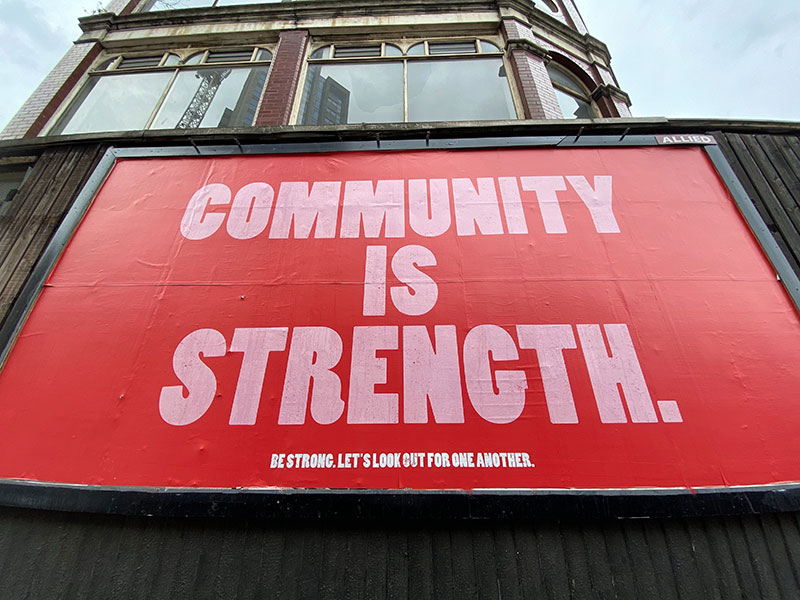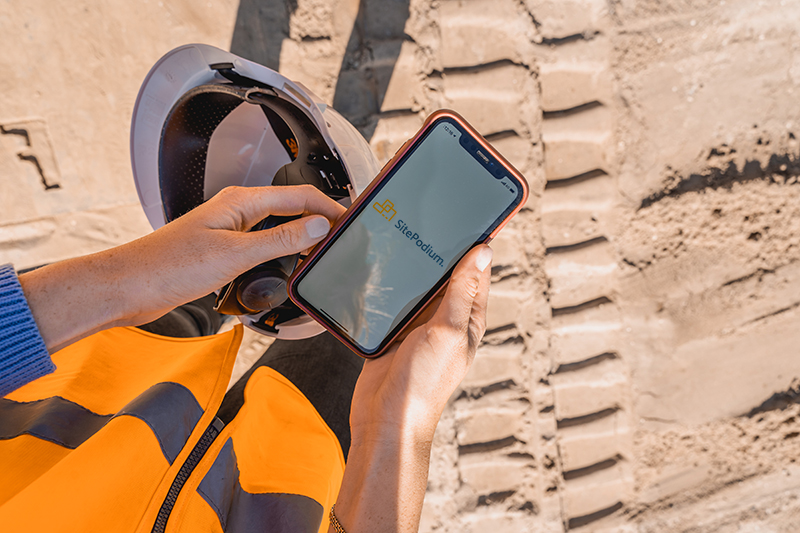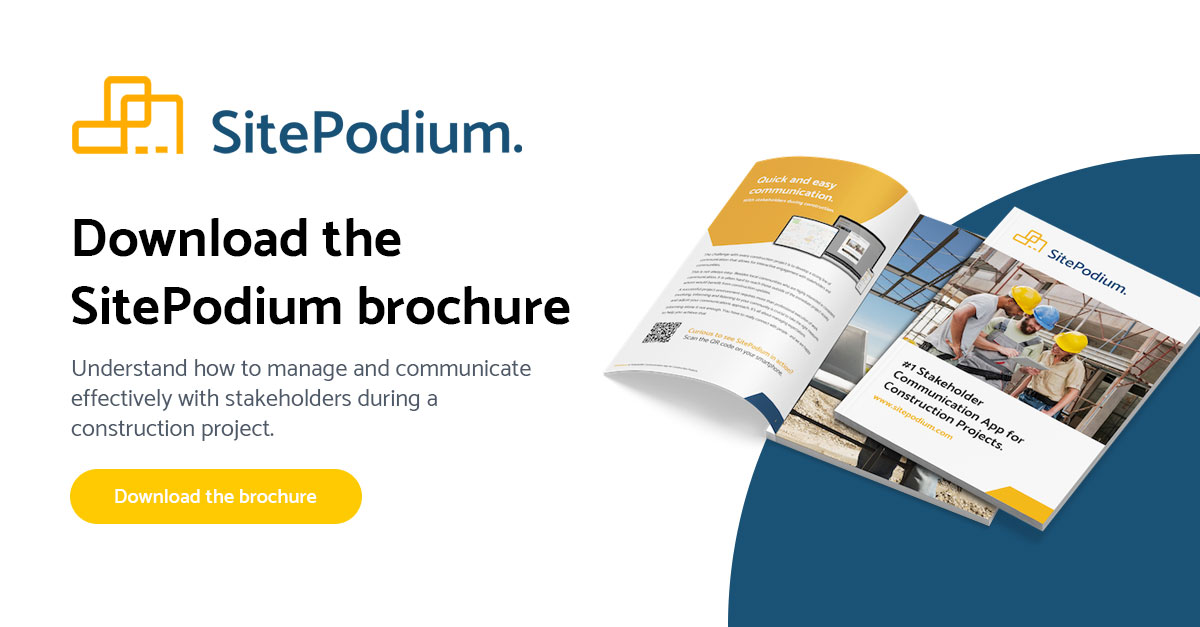The question – What is social value in construction? – is a relatively recent one being raised in the construction sector. The climate crisis and media attention around adverse weather condition have until recently been prioritised. But in a world where ESG (Environmental, Social, and Governance) considerations have become a priority, social value has also been moved to the forefront of the discussion.
More and more construction firms are recognising the importance of social value in relation to place. This is often aided by the rise of social media. As a result, they start to take their responsibilities towards the local communities they work in much more seriously.
At SitePodium, social value has always been a major aspect of what we do and stand for. But the answer the question ‘What is social value in construction?’ is not so easily given. As you will read here, social value in construction is a dynamic, changeable and at the same time project-specific subject.
In this article, we will answer this small question that is getting bigger and bigger in the world of construction, we look at why it matters and the challenges faced when trying to embrace social value in the construction industry.
What is social value in construction?
The definition of social value in construction starts with defining what social value is generally. Social value is all the things that matter to communities and/or society. Construction companies can create social value by delivering outcomes that benefit the local communities around a building site. This can be done through social, economic or environmental means.
This is maybe easier explained through some examples. Social value can be added to the local residents by creating jobs and economic growth, by supporting community health and wellbeing, by improving the local environment, or by strengthening community cohesion.
What is social value in construction to you? That is for you to define. The answer can only be given by the community and local residents themselves. To create spaces that are truly meaningful, construction firms must understand the real wants and needs of local communities and be willing to support them in achieving this.

When social value is neglected
Do not pay enough attention to social value and construction projects are at risk of becoming separated, isolated and may ultimately fail to be used as intended. And too often it is overlooked or seen as a nice-to-have rather than a must-have. Without careful consideration of local people’s wants and needs, developments can become detached and disconnected from the community they intend to benefit, and the end-user may ultimately discover that they are not fit for purpose.
Another result of neglecting social value is that it will become a goal that seems unmeasurable, that is unpredictable and that you cannot seem to grasp. To be able to see the results of the efforts you put into it, you have to be on top of it and that means that half-hearted attempts (no matter how well-intended) are not good enough. To be able to grasp a firm hold on social value in construction and the results it yields, you have to dedicate yourself to it properly.
Why does it matter?
You know now what social value in construction is and what happens if it is neglected. It is not strange that this is becoming a hot topic in the sector right now. Social value benefits not only the local residents, but also the construction company in their midst.
Therefore, before we dive into the challenges that are faced when focusing on social value and how to tackle them, we will discuss the benefits that everyone will gain when social value is made a key focus point in a construction project.
1. Maximum value and return on investment
Engaging on social impact enables construction firms to deliver maximum value and return on investment to their clients. By demonstrating the positive impact their projects will have on residents and wider society, on top of environmental outcomes and financial value, companies can gain a competitive advantage that sets them apart from other firms. In addition, most planners and developers now expect to see social value written into bids, so a well-considered approach may help firms to win work.
2. Social value boosts staff morale
A strong social impact strategy will also help enhance internal and external communications and boost staff morale. The global workforce is now more value-aligned than ever and most of today’s top talent want to work for companies that are doing the right thing. Creating authentic social value therefore not only benefits and enhances local communities, but also the construction industry itself.
3. Social value has an impact that lasts
It’s understandable that for many of those currently coming to terms with the topic, investing in social value may feel like a trade-off with shareholder value, especially in the short term. However, over time, investment in community schemes can generate powerful social impact stories, offering people-centred narratives which, in addition to environmental and financial metrics, will help firms demonstrate clear value, win business, and create spaces which are socially inclusive, accessible and fit for the future.

Social value in construction: the challenges
Earlier, we answered the question ‘What is social value in construction?’ as all the things that matter to the communities around you. External stakeholder engagement (SitePodium’s main ambition) is therefore an immediate and major contributor to social value.
But what are the challenges faced by those trying to implement and measure social value in construction? We listed the most common ones.
1. Social value is difficult to measure
When looking at the answer to our focus question, we immediately see the difference between social value in construction as opposed to, for example, financial value. Whilst clearly defined targets and rigorous systems for collecting data exist in both the financial and environmental spheres, social value is more difficult to implement. There is no database that you can extract information from. The local residents are your database and the impact of social value is more based on a general feeling than related to clear black and white data.
2. Social value is not a constant
Another challenge you face when working on social value in construction is the fact that the emotions towards your project can quickly change. There is no chart that shows you a rising trendline. One wrong move, like notifying the wrong target group when closing a road or covering a residential area in construction dust because of an unexpected change in wind direction, can shift the attitude towards your project in a matter of seconds.
So, when it comes to creating and measuring their social impact, many construction firms are understandably left scratching their heads. They see the benefits and hear the people, but are faced with a task that seems incredibly difficult to implement, measure and collect results from. Also, these results are fare from predictable and one wrong move can start a downwards spiral.
Or so it seems. We at SitePodium have been working on the subject of social value long enough to know that it is not as liquid and unpredictable a goal as it appears to be on the surface.
Which tools are available to you?
The creation of social value requires dialogue and authentic engagement at a community level using all the tools available. And there are many, such as websites, paper surveys, interactive maps, and in-person meetings. Open a community lounge where people can come in and speak to someone immediately about their questions, ideas and concerns. Raise polls or place a screen with smileys in your lounge area, where people can leave feedback and you collect data.
Do not forget the dedicated community engagement apps like SitePodium, which can be used in the consultation phase and beyond. It has an admin module where you can view statistics and generate reports. It makes community opinion tangible and it helps people shape and take ownership of their own living and working spaces. This will help to identify and address important local needs and gaps, such as relevant work experiences and apprenticeships.
At its core, social value is about listening to communities, understanding what they really want, and fostering meaningful dialogue rather than simply pushing one-way communications that offer people no real opportunity to respond or push back. By proactively engaging with communities on issues like inclusion and accessibility, construction firms can ensure they create places which are relevant and purposeful for all stakeholders. To create places that are safe, connected and resilient, and which local people care about and genuinely want to be part of.
What is social value in construction? Find the answer with SitePodium
What social value is in your construction project, only you can measure and obtain. But SitePodium will help every construction project to communicate, interact and interrelate with local residents, shop owners, political parties, religious groups and others that benefit from it. It brings construction companies and communities together, bound by the subject of social value and what it means to all involved.
We offer you important insights in the results of your efforts paid to social value through the admin module. You can see statistics and generate reports which already makes social value a much easier subject to grasp. Download our brochure, book a demo or simply contact us, so we can discuss all that SitePodium has to offer on social value in your construction project.


